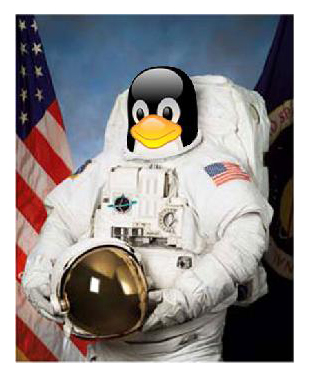Open Source is not rocket science, or is it?
If we look at Bugzilla’s mascot (called Buggie) most of us would immediately think that this software can’t be anything serious… and the same happens with many other open source projects that are underestimated by many executives and IT managers.
In this case, the issue tracking software from the Mozilla Foundation was adopted (and adapted) by the NASA with the help of Everything Solved. In my opinion, this is a great example of how OSS can bring benefits for the enterprise, as well as generate business.
Although there is a long list of commercial and non-commercial organisations using this software, what is most interesting is that a complex organisation involved in billion dollar projects like the NASA has trusted on this software.
Based on Bugzilla, they have built a system called PRACA (the Problem Reporting and Corrective Action System), which is used to track problems discovered while building and testing shuttle components, so that mission control and various NASA departments can have problem-solving information at their fingertips. PRACA is meant to replace 40 different database systems at various different departments of NASA, centralizing problem tracking for the space shuttle program (and the future Constellation space program due to begin in 2010).
Another interesting thing is that this is not the first example of OSS being used in space exploration, either by NASA and also by other space agencies.
To mention some of them, we can see that the Ada compiler and GNAT (the GNU Ada Translator) were used under contract to the Canadian Space Agency (CSA) to develop control software for the Mobile Servicing System (MSS), an essential component of the International Space Station (ISS). The MSS is a complex robotic manipulator system that plays a key role in space station assembly and maintenance.
Further away to Mars went an OSS loaded robot called the Mars Rover, with NASA engineers relying on open source systems for much of the rovers’ functionality.
As a final example, Space Shuttle Endeavour will be transmitting live video feeds captured by the Telescience Lab and Fedora will be running the servers that distribute the footage to Houston’s Mission Control and NASA TV.
So, to sum up, there are several benefits from the usage of open source software for space exploration:
- Cost Reduction: Leverage free and open source development process for projects that normally cost millions in development and testing. In the case of the PRACA project, the cost was an order of magnitude cheaper than what was being used before.
- Improve quality and functionality of existing products
- Improve the effectiveness of collaborations with other space agencies, universities, and contractors.
- Provide opportunities for broader involvement in the space program.
- Distribute space exploration software to as wide an audience as possible.
- Encourage adoption of common practices and open standards.
However, for this kind of mission critical systems, it is also crucial to have a solid requirements management process, and a robust quality control and transition processes and, of course, to count on an excellent team.
All of this is just an example of the flexibility provided by open source software, which can create WIN-WIN scenarios for government agencies, citizens and also to corporations.


![Reblog this post [with Zemanta]](https://i0.wp.com/img.zemanta.com/reblog_e.png)
 Show only posts in english
Show only posts in english Mostrar sólo posts en español
Mostrar sólo posts en español







То что бредомысли это точно 🙂
Видно настиг творческий кризис. Мысле нет о чем писать 🙂
Спасибо! Буду теперь заходить на этот блог каждый день!